Pruning Shrubs
It’s spring! Time for my favorite activity – pruning!! Last year I gave some pointers on pruning fruit trees (or really any trees). This year, let’s talk about your shrubs.
Most shrubs grow new shoots right from the area where they are planted. We call this “expanding from the crown.” It can get pretty thick in there with old, new, weak or dead branches all growing together.
Remember, during the winter, most of a deciduous plant’s energy is stored in the roots. If you remove some branches, in the coming growing season, the root energy will go into the remaining branches and create new buds and growth. The remaining branches will be more vigorous after pruning.
Pruning opens up the shrub so that more light and air gets inside. Pruning also allows you to manage the height and shape of the shrub.
- If your shrub flowers in early spring, prune it right after the blossoms fade so that it can make new growth and new flower buds for next year.
- If your shrub produces fruit in summer, you will have to use the renewal pruning methods in spring while the plant is dormant.
Use a sharp, quality hand pruner, lopper or pruning saw (think Felco brand – high quality, more expensive, but you will use them your whole life).
- Remove branches that grow downward or cross through the shrub.
- Cut out small, weak branches that crowd good branches.
- Keep branches that are growing outward and upward and look healthy.
- Don’t be afraid – shrubs are very forgiving!
Click here for CREC’s shrub pruning handout.
Renewal Pruning
Best for most flowering and fruiting plants. Remove ¼ to ⅓ of old growth each year.
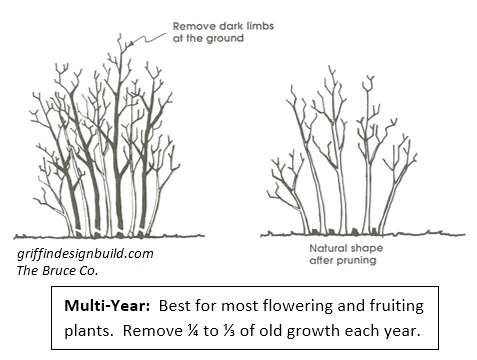
Heading Cuts
Proper heading cuts lower a branch back to a lateral bud or shoot which is less vigorous than a vertical shoot.
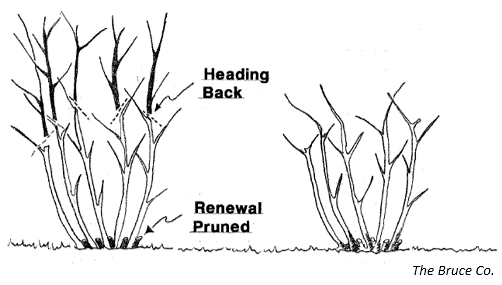
Thinning Cuts
These open the plant to light and air. Make proper cuts, without leaving stubs, just above a bud or side branch so that growth is ‘upward and outward’.
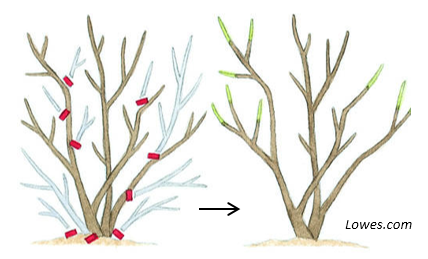
Shrub Pruning Examples
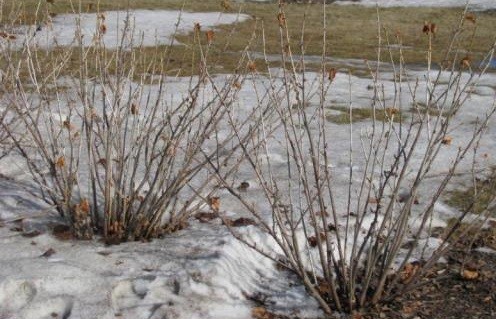
Currant shrubs. On right: Thinned by renewal pruning.
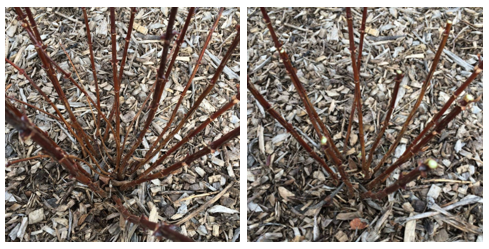
Haskap shrub. On right: Small and crossing canes removed, thinned and headed back.
NDSU does not endorse commercial products or companies even though reference may be made to tradenames, trademarks or service names.
Kathy Wiederholt
Kathy.Wiederholt@ndsu.edu
Fruit Project Manager


